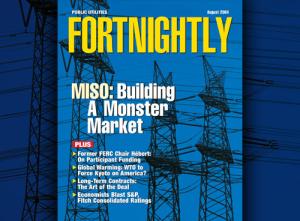Credit-rating linkage harms certain power companies. Ring-fencing is the best answer for regulators.
Fred Grygiel is chief economist and John Garvey is economic analyst with the New Jersey Board of Public Utilities. The views expressed herein are those of Dr. Fred Grygiel and John Garvey and do not necessarily reflect the views of the NJBPU, the commissioners, or other members of the NJBPU Staff.
In recent years, a persistent battle has developed between state public utility commissions (PUCs) and holding companies over the negative financial and operational impacts on regulated utilities of failed diversification investments. Ratepayers expect to compensate companies for the costs of providing utility service — not those costs associated with the unregulated activities of affiliated companies.

Unfortunately, the realities are often painfully different, and in some instances disastrous for the financial health of the utility. Moreover, ratepayers and politicians are highly sensitive and easily outraged by a utility attempting to recover costs associated with non-regulated companies in the regulated cost of providing utility service.
Credit ratings linkage is an additional worry for state regulators when confronting failed diversification. Fitch and Standard & Poor's, for example, apply linkage in determining the ratings of companies within a holding company structure. This method directly links the credit rating of the utility to the parent and any affiliated companies. Consequently, the regulated utility may be penalized via a lower credit rating, which would not happen if it were a stand-alone company.

